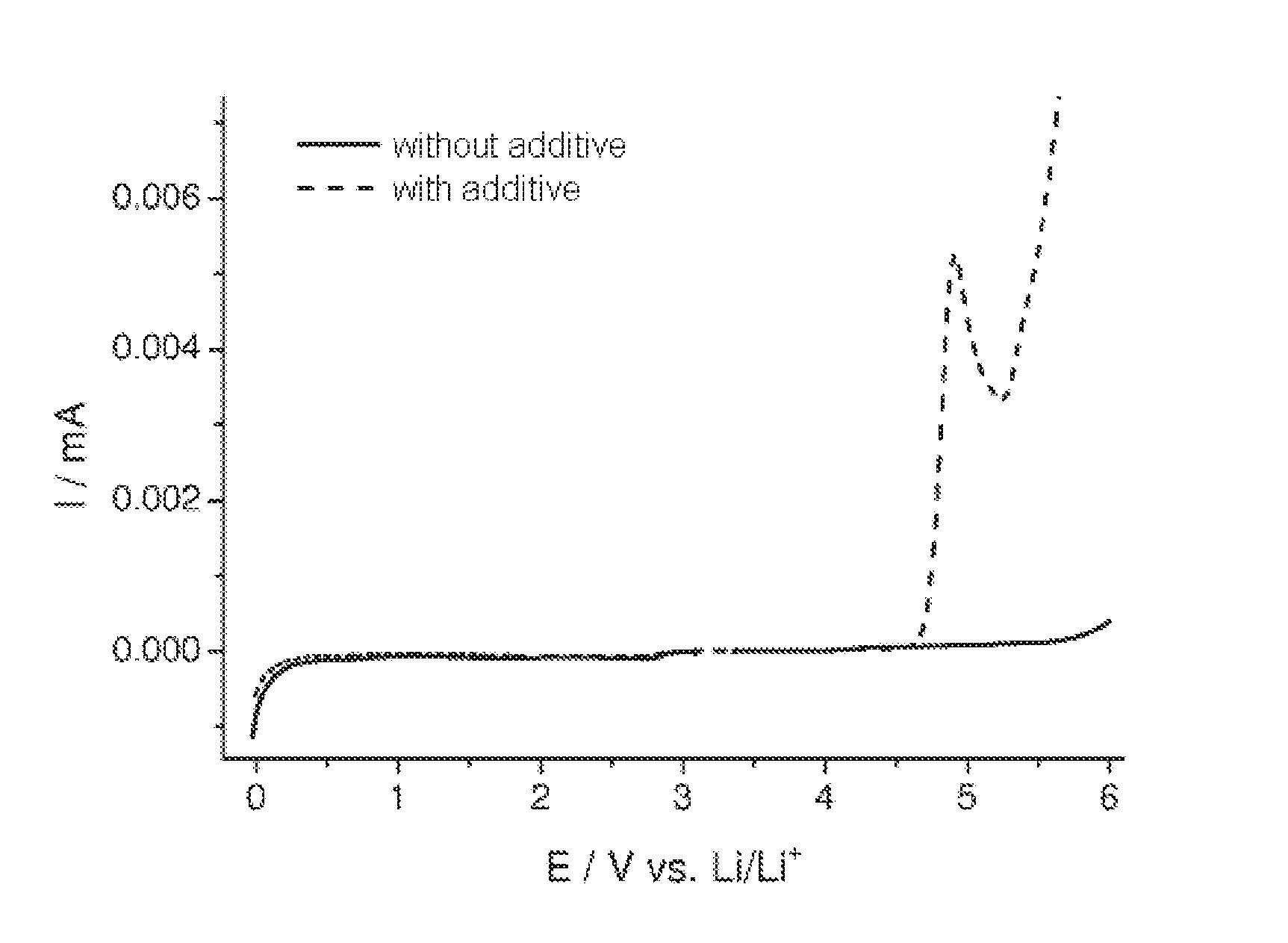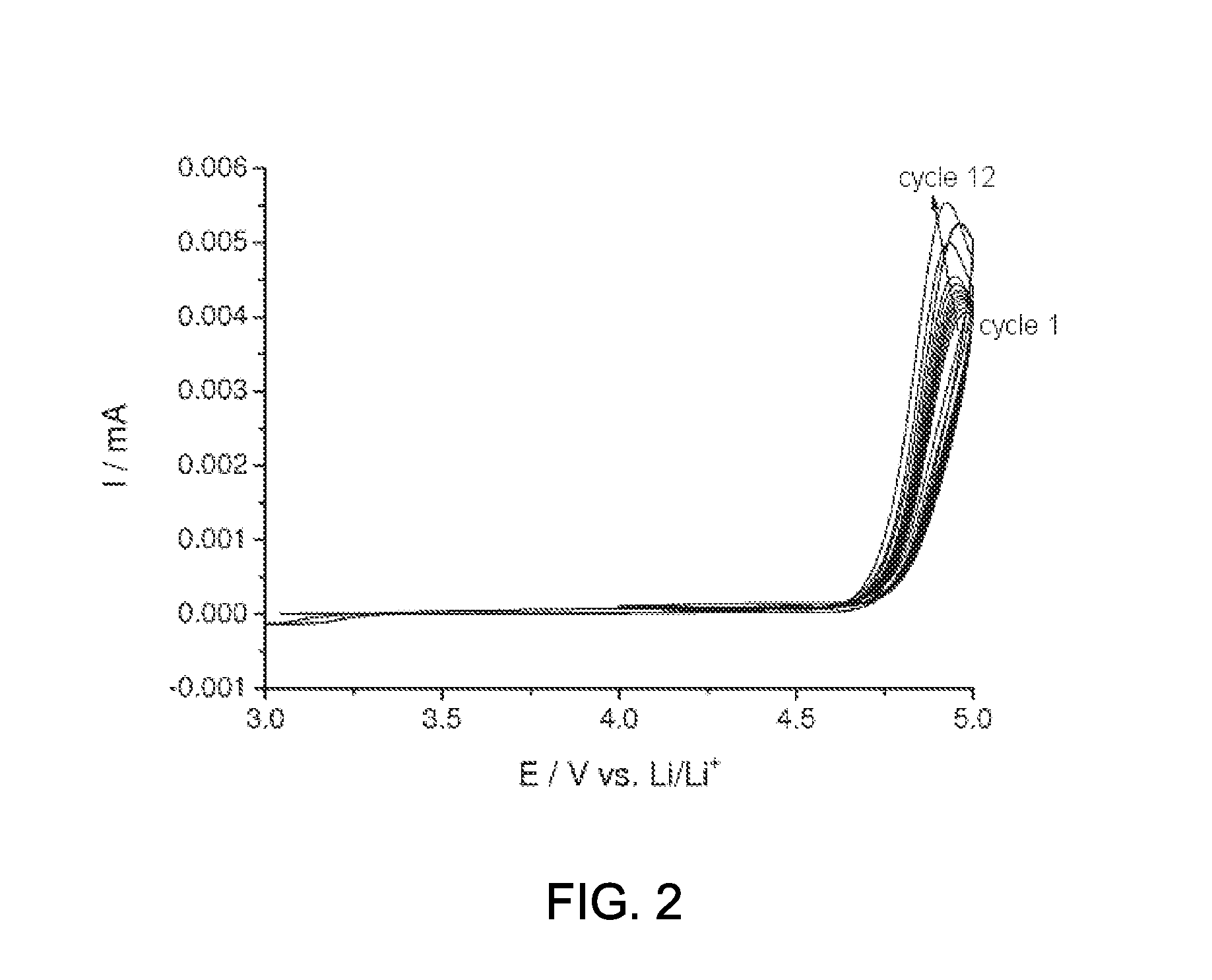Electrolyte additive for a lithium-based energy storage device
- Summary
- Abstract
- Description
- Claims
- Application Information
AI Technical Summary
Benefits of technology
Problems solved by technology
Method used
Image
Examples
example 1
Preparation of the Compound of the Formula (2)
[0077]A solution of 0.30 g (2.2 mmol) of 2,2-difluoro-1,3-dimethylimidazolidine (ABCR) in 20 ml of diethyl ether (Roth) were introduced into a Schlenk trap with a Teflon-spindle tap and magnetic stirrer. At −196° C., 0.17 g (1.93 mmol) of PF3 (ABCR) were condensed in. The trap was placed into a −40° C. ethanol cold bath, where it was brought to room temperature (18° C.-23° C.) while stirring within 12 hours. The volatile constituents were drawn off under reduced pressure and the remaining solid was washed with small portions of x3 ml of demineralized water at 10° C. After drying, the compound of the formula (2) was obtained in solid form.
[0078]The compound of the formula (2) was dried at a temperature of 80° C. with the aid of a rotary vane pump (Pfeiffer Vacuum) for 24 hours.
example 2
Preparation of the Compound of the Formula (3)
[0079]The compound of the formula (3) was prepared as specified in example 1, except that 0.31 g (2.24 mmol) of bis(dimethylamino)difluoromethane (ABCR) was used as starting compound.
example 3
Determination of the Stability Window of the Compound of the Formula (2)
[0080]To examine the stability window, the compound of the formula (2) prepared according to example 1 was added to an electrolyte and analyzed against an electrolyte without addition.
[0081]Two mixtures each of 30% by weight of ethyl carbonate (EC) (Ferro Corporation, “battery grade” purity) and 70% by weight of diethyl carbonate (DEC) (Ferro Corporation, battery grade) (EC:DEC, 3:7) were provided. The required amount of LiPF6 (Sigma-Aldrich, battery grade) was dissolved in one solvent mixture, so as to result in a concentration of 0.9 M of LiPF6, and additionally 0.1 M of the compound of the formula (2) prepared according to example 1. For a comparative electrolyte, the required amount of LiPF6 (Sigma-Aldrich, battery grade) was dissolved in the second solvent mixture, so as to result in a concentration of 1M LiPF6.
[0082]The electrochemical stability was determined by means of linear sweep voltammetry (LSV). In...
PUM
 Login to View More
Login to View More Abstract
Description
Claims
Application Information
 Login to View More
Login to View More - R&D
- Intellectual Property
- Life Sciences
- Materials
- Tech Scout
- Unparalleled Data Quality
- Higher Quality Content
- 60% Fewer Hallucinations
Browse by: Latest US Patents, China's latest patents, Technical Efficacy Thesaurus, Application Domain, Technology Topic, Popular Technical Reports.
© 2025 PatSnap. All rights reserved.Legal|Privacy policy|Modern Slavery Act Transparency Statement|Sitemap|About US| Contact US: help@patsnap.com



